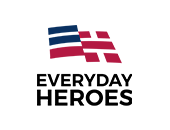WASP - The Story Of The First Women Pilots
03/07/23
Establishment and Support of the WASP Program
- WASP program created in 1943
- Acronym for Women Air Force Service Pilots
- Initiated due to the need for non-combat pilots during WWII
- Supported by Jacqueline Cochran and Eleanor Roosevelt
- Eleanor Roosevelt advocated for women's involvement in aviation
Duties and Achievements of the WASP
- Flew over 60 million miles during WWII
- Operated every type of aircraft used by the Army Air Force
- Delivered more than 12,000 aircraft to bases across the nation
- Participated in various types of missions, excluding combat
- Made significant contributions to the war effort
Challenges Faced by the WASP
- Initial doubts about women's ability to fly military aircraft
- Lack of recognition and awareness about the program
- Disbandment of the program in 1944
- Disappointment with the Army's decision to recruit and train the first women pilots
- Efforts by the WASP to prove their status as the first women pilots
Recognition and Veteran Status
- Barry Goldwater played a role in obtaining veteran status for the WASP
- WASP provided evidence of their service, including official records and logbooks
- In 1977, Jimmy Carter signed the law granting veteran status to the WASP
- Lack of celebration or acknowledgment during the signing
- Grateful nation remembers the WASP as everyday heroes
Diversity and Dedication of the WASP
- WASP pilots came from various backgrounds and walks of life
- Shared goal of serving their country during a critical time
- Many of the pilots were mothers, daughters, and sisters
- Proud pilots who made significant sacrifices for their country
- The WASP's dedication and service are appreciated by the nation
